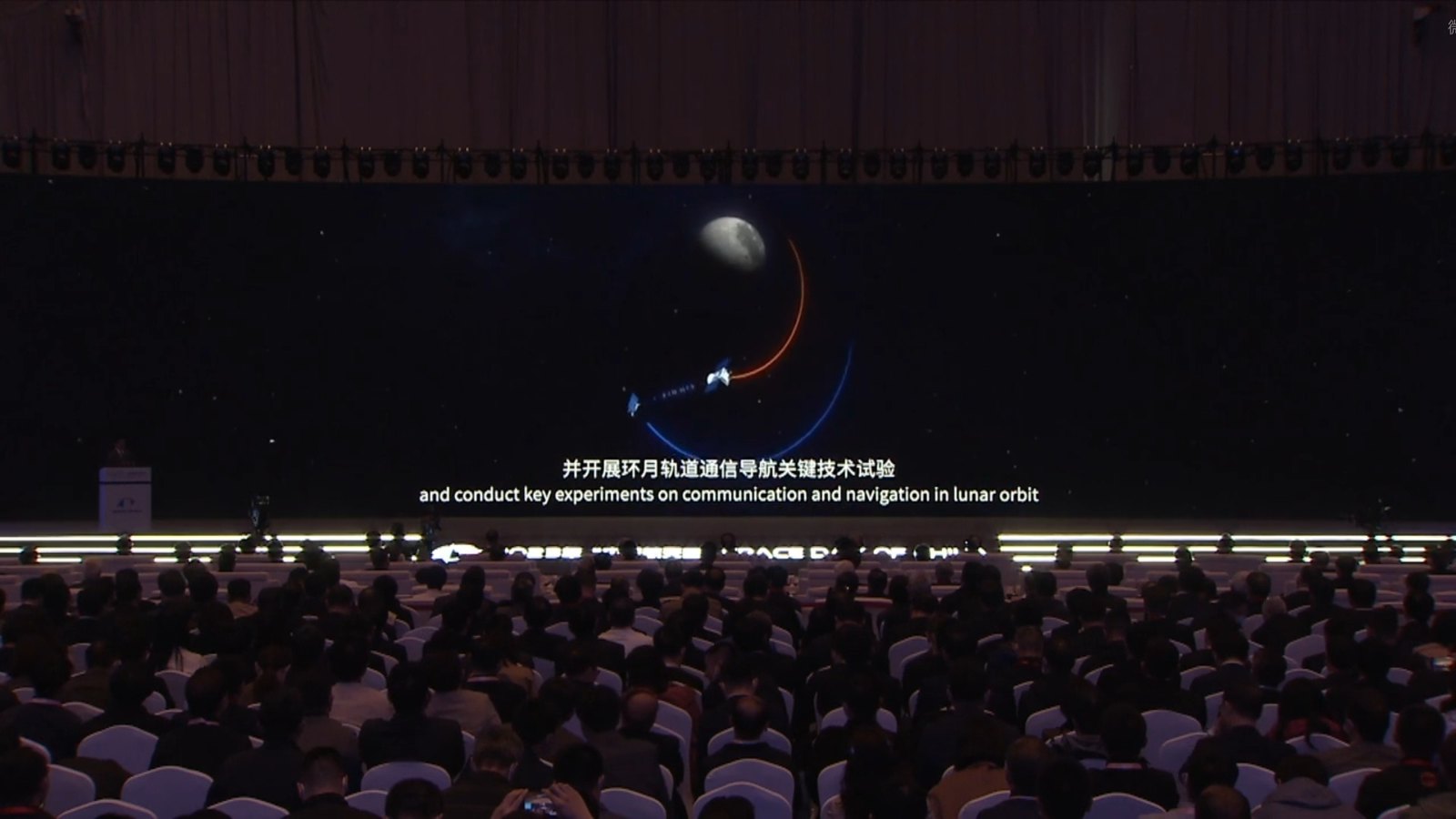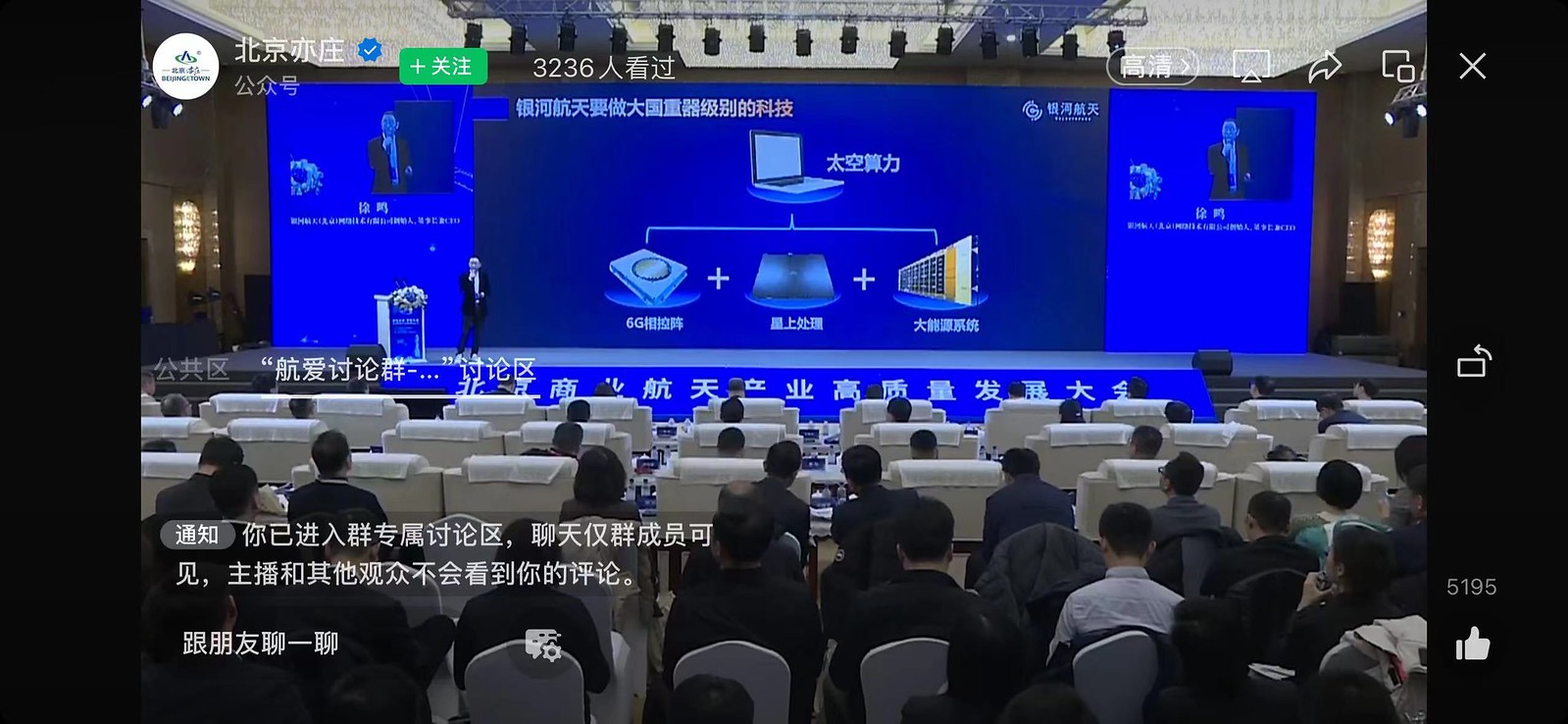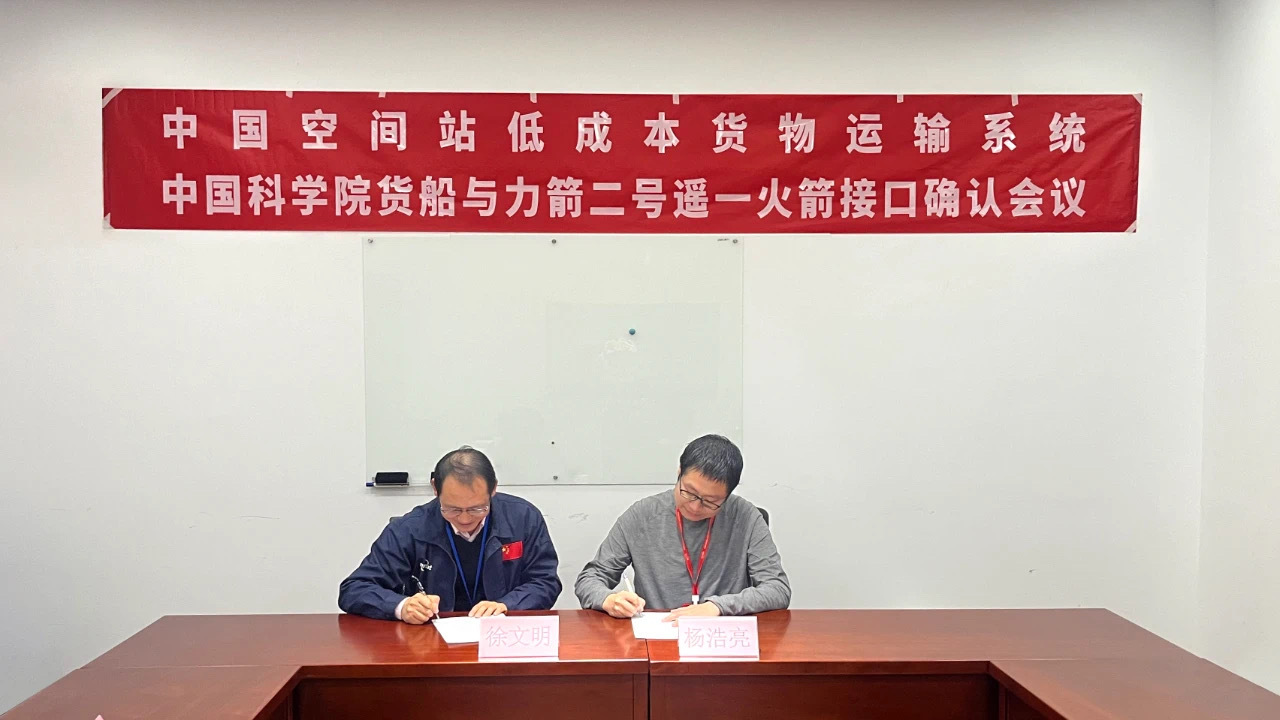An ambitious plan to develop the commercial space industry through 2028 was unveiled in the Beijing Economic and Technological Development Area (BDA) on Saturday. The plan aims to achieve the country's first use of a reusable rocket, develop 10 unicorn firms, and lay the foundation for building a commercial space cluster with a total annual output expected to surpass 100 billion yuan ($14.04 billion)..
You are using an out of date browser. It may not display this or other websites correctly.
You should upgrade or use an alternative browser.
You should upgrade or use an alternative browser.
China's Space Program Thread II
- Thread starter Blitzo
- Start date
by78
General
High-resolution images from the latest Jielong-3/SD-3 sea launch, which successfully inserted into orbit a total of nine satellites: DRO-L; Zhixing 2A; Oriental Smart Eye Gaofen 01; Weihai-1 01 and 02; Star Epoch 18, 19, 20; and NEXSAT-1. This mission marks the third flight of the Jielong-3 carrier rocket.
Of note, NEXSAT-1 is an Egyptian observation micro-satellite. Oriental Smart Eye Gaofen 01, also known as Yantai 01, is an optical remote sensing satellite with a resolution of <0.5m at an altitude of 500km.





Of note, NEXSAT-1 is an Egyptian observation micro-satellite. Oriental Smart Eye Gaofen 01, also known as Yantai 01, is an optical remote sensing satellite with a resolution of <0.5m at an altitude of 500km.





by78
General
High-resolution images from the latest Long March 2C launch, which successfully inserted into orbit 11 satellites belonging to automaker Geely's Geely Constellation 02, which is an integrated constellation of communication, navigation, and remote sensing satellites. The launch marked the 508th flight of the Long March series and the 200th flight launched from Xichang Launch Center (last image).










by78
General
Magpie Bridge 2 (鹊桥二号) relay communication satellites will be launched in 2024, composed of Tiandu-1 (天都一号) and Tiandu-2 (天都二号) satellites. The two satellites will cooperate to carry out key technical tests of communication and navigation technologies around the Moon.
Magpie Bridge 2 will provide relay communication service for Chang'e-4, 6, 7, and 8 missions.
Tiandu-1 and Tiandu-2 are developed by the Deep Space Exploration Laboratory, weighing 61kg and 15kg, respectively. They will use satellite-to-earth laser ranging and inter-satellite microwave ranging to carry out technical verification of high-precision orbit determination around the Moon, which will provide design reference for the implementation of the future iteration of the Magpie Bridge communication and lunar remote-sensing constellation.




Tiandu-1 and Tiandu-2 satellites have left the factory and are on their way to launch site. The two satellites will be launched together with Magpie Bridge 2 relay satellite.

by78
General
GalaxySpace
GalaxySpace has unveiled its next generation (3rd gen) LEO broadband communication satellite. It will feature a large phased array antenna and support direct connection to mobile phones. Apparently, the phased array antenna and solar panels are integrated as one piece to reduce weight and save space.


The Chinese prime minister recently toured Beijing GalaxySpace (a.k.a. Galaxy Aerospace), a private company that develops LEO broadband communications satellites.
Of interest is a presentation slide that shows the company's 5G broadband satellites (top left), which will be stackable (similar to Starlink). It looks like prototype(s) already exist.


GalaxySpace has unveiled its next generation (3rd gen) LEO broadband communication satellite. It will feature a large phased array antenna and support direct connection to mobile phones. Apparently, the phased array antenna and solar panels are integrated as one piece to reduce weight and save space.


by78
General
The Micro-satellite Innovation Institute –– whose proposal for a low-cost cargo transport system to the Chinese space station was among the submissions selected for detailed study –– has to use its Lijian-2 rocket to launch a verification cargo spacecraft in 2025. This could well refer to the scheduled maiden flight of Lijian-2.


Zhongke/CAS Space has confirmed that the cargo spacecraft to be launched by Lijian-2's maiden flight has a cargo capacity of ≥2.75 tons.


by78
General
(Continued from above...)
More presentation slides from Zhongke.
Current and planned rocket lineup:
– Lijian-1 in active service with a 500km/SSO carrying capacity of 1.5t.
– Lijian-2 under active development with a 500km/SSO capacity of 7.8t, first flight in 2024, will be the main workhorse for the launch of Shanghai Qianfan constellation (上海垣信千帆星座).
– Lijian-2 Heavy, 500km/SSO capacity of 12t.
– Lijian-3, 500km/SSO capacity of 20t (with recovery).
– Lijian-3 will also be used for space tourism, carrying a spacecraft for space tourism; suborbital flight (100-120km altitude), carrying capacity of 1.5 to 2 tons. First suborbital test flight planned for 2024 and will officially take in space tourists in 2028.
Two engines unveiled:
– Both use LOX/Kerosene and extensively use 3D printed components.
– Liqing-1 engine: thrust 20 tons.
– Liqing-2 engine: thrust 85 tons.





More presentation slides from Zhongke.
Current and planned rocket lineup:
– Lijian-1 in active service with a 500km/SSO carrying capacity of 1.5t.
– Lijian-2 under active development with a 500km/SSO capacity of 7.8t, first flight in 2024, will be the main workhorse for the launch of Shanghai Qianfan constellation (上海垣信千帆星座).
– Lijian-2 Heavy, 500km/SSO capacity of 12t.
– Lijian-3, 500km/SSO capacity of 20t (with recovery).
– Lijian-3 will also be used for space tourism, carrying a spacecraft for space tourism; suborbital flight (100-120km altitude), carrying capacity of 1.5 to 2 tons. First suborbital test flight planned for 2024 and will officially take in space tourists in 2028.
Two engines unveiled:
– Both use LOX/Kerosene and extensively use 3D printed components.
– Liqing-1 engine: thrust 20 tons.
– Liqing-2 engine: thrust 85 tons.





by78
General
High-resolution images and HD videos from Landspace's successful VTVL test, which lasted approximately 60 seconds. The test vehicle, powered by a TQ-12 LOX/Methane engine, reached an altitude of 350m, descended at a speed of 0.75m/s, and achieved a landing position accuracy of 2.4m.
LandSpace plans more VTVL tests for 2024, including a VTVL test scheduled for June, which will reach an altitude of 10km.

Specs for the VTVL test vehicle:
– Diameter: 3.35m
– Length: 18.3m
– Diameter with landing legs fully extended: 11.6m
– Propulsion: one 80-ton reusable TQ-12 engine
– Take-off weight: 50.3 tons
– 45% to 110% thrust adjustment range with multiple ignition capability

Last edited:
by78
General
(Continued from above...)
More slides from LandSpace:
– Three launches of an improved Zhuque-2 variant are planned for second half of 2024.
– Zhuque-3 is in late stage of development. Final assembly will be complete in the first half of 2025, with first flight planned for later that year.
Zhuque-3 specs:
– Diameter: 4.5m
– Length: 76.6m
– Take-off mass: 660 tons
– Take-off thrust: 900 tons
– Capacity (expendable): 21.3 tons
– Capacity (with recovery): 18.3 tons
– Fuel: LOX/Methane
– Grid rudders: four
– Landing legs: four


More slides from LandSpace:
– Three launches of an improved Zhuque-2 variant are planned for second half of 2024.
– Zhuque-3 is in late stage of development. Final assembly will be complete in the first half of 2025, with first flight planned for later that year.
Zhuque-3 specs:
– Diameter: 4.5m
– Length: 76.6m
– Take-off mass: 660 tons
– Take-off thrust: 900 tons
– Capacity (expendable): 21.3 tons
– Capacity (with recovery): 18.3 tons
– Fuel: LOX/Methane
– Grid rudders: four
– Landing legs: four


by78
General
Some presentation slides from the private launch provider Galactic Energy.
Pallas-1A has finished assembly, first launch is expected later this year:
– Diameter: 3.35m
– Mass at take-off: 283 tons
– Capacity to LEO: 8 tons, 10 tons with optional second stage.
– Reusable first stage powered by seven engines, launch can proceed with one engine out.
Pallas-1B:
– Mass at take-off: 730 tons
– Capacity (LEO): 17.5 tons
Another interesting tidbit, which is not seen in the slides but apparently mentioned by the presenter: Galactic Energy and partners are exploring launch (assist) methods such as electromagnetic launching and pneumatic launching using supercritical carbon dioxide.




Pallas-1A has finished assembly, first launch is expected later this year:
– Diameter: 3.35m
– Mass at take-off: 283 tons
– Capacity to LEO: 8 tons, 10 tons with optional second stage.
– Reusable first stage powered by seven engines, launch can proceed with one engine out.
Pallas-1B:
– Mass at take-off: 730 tons
– Capacity (LEO): 17.5 tons
Another interesting tidbit, which is not seen in the slides but apparently mentioned by the presenter: Galactic Energy and partners are exploring launch (assist) methods such as electromagnetic launching and pneumatic launching using supercritical carbon dioxide.




